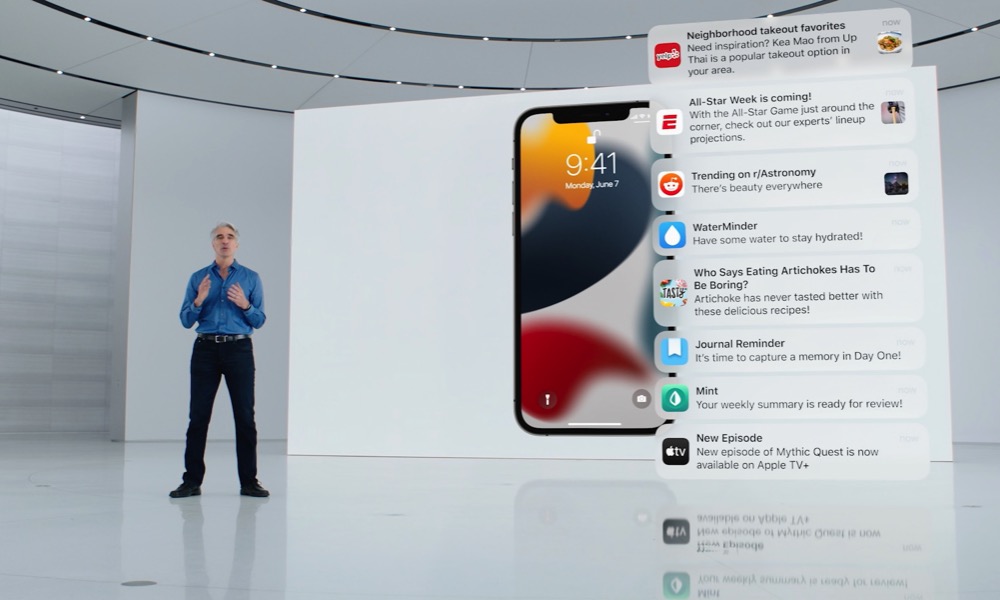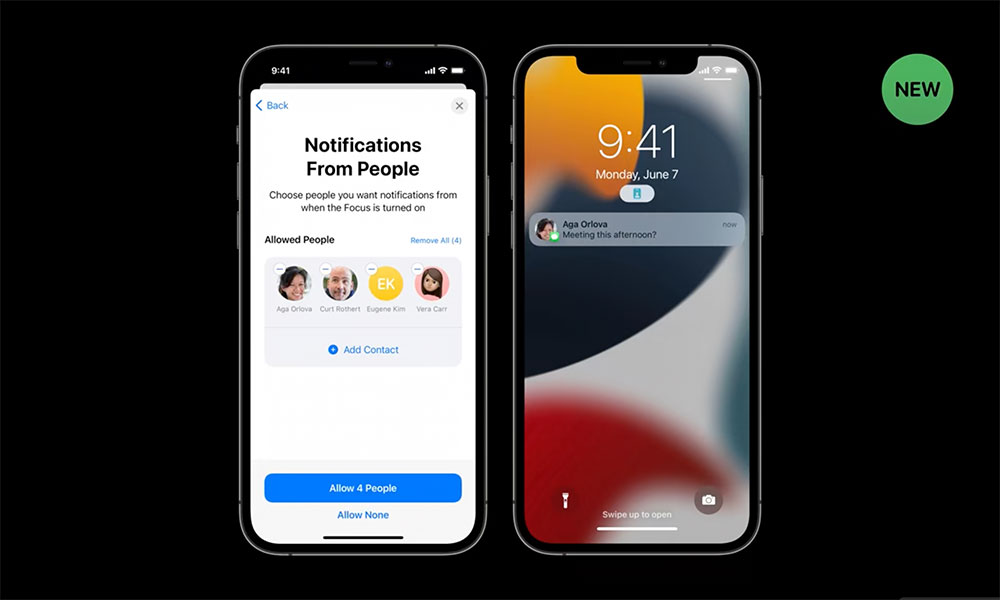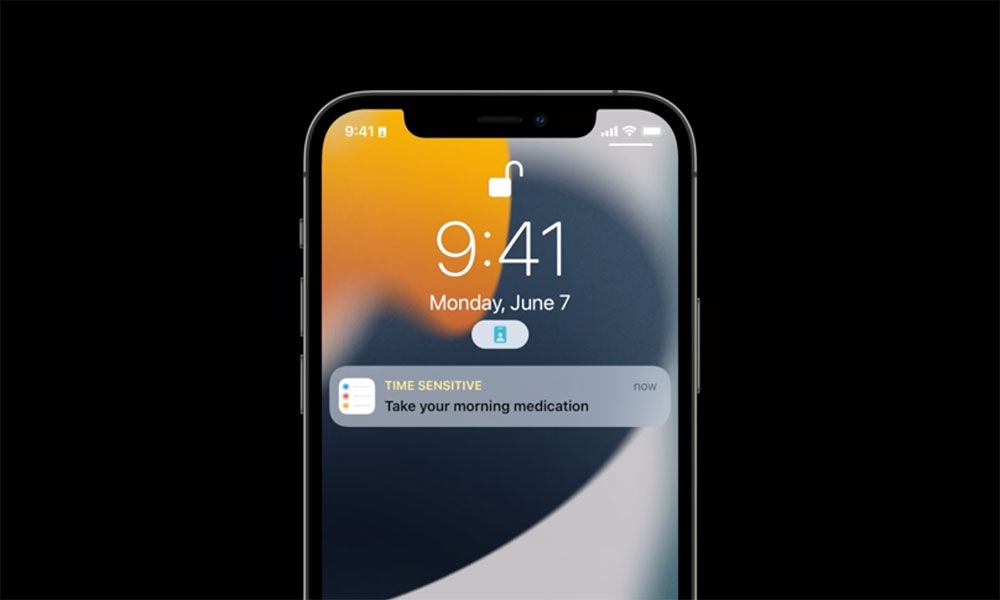iOS 15’s Insane Level of Notification Control Will (Pleasantly) Surprise You
 Credit: Apple
Credit: Apple
Toggle Dark Mode
Although features like FaceTime and SharePlay grabbed much of the attention in this week’s iOS 15 unveiling, it’s usually the system-wide improvements that turn out to be much more interesting and useful.
After all, even though you may pop into FaceTime and Messages to chat with your friends many times a day, you’re interacting with core features like your Home screen and notifications even more often, and it’s these things that will impact your user experience and how you feel about your iPhone even more.
In that vein, this year’s iOS 15 release has actually delivered a pretty big quality-of-life improvement, with the most significant change to its notification system in years.
This year, iOS 15 does for notifications what iOS 14 did for the Home screen last year, and it promises to change the way you use your iPhone.
If you’ve been following the news about iOS 15, you’re probably already aware of the new Focus Modes, which are a pretty big deal on their own, but these are being joined by several other notification improvements that will help intelligently triage and organize your notifications in a way that’s never been done before on iOS.
Put simply, we’re no longer going to be living in a world where every notification gets the same priority. With iOS 15, you’ll have more control over what you see, where you see it, and when you see it.
For instance, iOS 15 adds a new Notification Summary feature that will collect low-priority notifications in a group that you can review later on at your convenience, rather than having them bother you throughout the day.
This will be particularly great for things like news and social media notifications that you only want to deal with at certain times — and you’ll be able to choose when those times are, with the ability to set multiple times throughout the day when these summaries will be delivered to you.
Even better, iOS 15 will use on-device machine learning to figure out your preferences so that these summaries will be presented with the most important notifications near the top, rather than simply showing up as a chronological list of when they all came in.
The same on-device intelligence will also ensure that notifications from actual people always come through immediately, regardless of whether those are coming from the built-in Messages and Mail apps, or third-party apps like WhatsApp and Facebook Messenger.
This intelligence will also be combined with the new Focus Modes to give you more control over what you want to be notified of in different contexts. For example, a “Work” Focus mode could be used to block out all personal communications except those from a spouse or other immediate family member, while a “Personal Downtime” Focus mode would block all work-related communications and other things you prefer not to be distracted by when you’re trying to relax and unwind.
More significantly, however, these “Do Not Disturb” modes will now recognize people across multiple messaging services.
It’s been possible for a long time to allow specific people to bypass Do Not Disturb mode, but this has been limited only to phone calls from the built-in Phone and FaceTime apps or SMS and iMessage texts coming through the built-in Messages app.
However, now it looks like iOS 15 will allow communications from those on your approved list to come through other sources as well, such as Facebook Messenger, or WhatsApp, Telegram, Signal, or even Slack.
Your iPhone will do your best to try to match people up automatically in your Contacts, but you may also be prompted to link some up manually when new messages come in from a person your iPhone doesn’t recognize. Once you’ve done this, however, you need only designate the contact you want to allow messages from, and iOS 15 will let them come through, regardless of whether they’re reaching out to you via iMessage, WhatsApp, Slack, or just about anything else.
Multiple Priorities
The other big game-changer in the iOS 15 notification system is that apps will now be able to designate different priorities for their notifications.
Until now, every notification that’s generated by third-party apps get treated the same way by iOS. While you’ve always been able to choose how notifications from each app are delivered, this meant that you couldn’t easily turn off more mundane notifications for an app without risking missing more important ones.
Not surprisingly, Apple’s own built-in apps have offered some exceptions to this for a while now. For instance, Apple Mail lets you assign different notification settings for VIP contacts, Favorite Mailboxes, and Thread Notifications. Similarly, Apple’s Calendar also offers different categories for upcoming events, invitations, shared calendar changes, and more.
Now, it looks like Apple will extend similar capabilities to third-party apps, allowing developers to have a bit more control over exactly how important they think their notifications should be.
Apple Notifications Engineer Kritarth Jain outlined this to developers in a WWDC session this week, describing four new “interruption levels” for notifications (two of which are new):
- Passive: This is an entirely new level of low-priority notification that does not alert the user or light up the screen at all. Naturally, these also won’t break through system controls like Do Not Disturb or Focus modes. They’re delivered silently to the Notification Center and are more likely to end up in the Notification Summary. Examples of this, Jain says, include things like dining recommendations and availability of new episodes on services like Apple TV+.
- Active: This is the standard notification level that’s been used for years, and is likely what most apps will continue to use. They’ll play sounds or vibrations, and light up the screen — assuming that they’re enabled, of course. As always, they still won’t break through system management of notifications, which means they can be silenced or summarized by Do Not Disturb and the new Focus modes. They’re important, but not important enough to override the user’s default settings, and include things like sports updates and live stream video notifications.
- Time Sensitive: This is the other new level of notification, which is effectively a high-priority alert. They work just like active notifications, except that they can break through system controls. Jain notes that they should only be used when it is relevant to actively interrupt the user with something that requires immediate attention, such as account security alerts, package deliveries, or reminders for important tasks like taking medication on time.
- Critical: This actually isn’t a new level, as it was added in iOS 14, but it’s very rarely used since apps can’t generate these notifications without special authorization from Apple. These are notifications that will break through anything and everything on your iPhone — including the ringer switch — to make sure you’re alerted no matter what. This level is reserved for absolutely crucial things like severe weather alerts and local safety alerts.
To be clear, even though Apple is giving developers a new “Time Sensitive” level of notification, it isn’t taking control away from the user. You will be able to turn time-sensitive notifications off on a per-app basis, or simply disable all notifications for a given app, just like you can do in iOS 14.
Each Focus mode will also include a switch to turn off Time Sensitive notifications globally for all apps when that Focus mode is enabled.
It is important to maintain trust when sending time sensitive notifications. Do not overuse their interruptive nature, and only use them when it is relevant to do so.
Kritarth Jain, Apple Notifications Engineer
Time Sensitive notifications will also be posted prominently, with the words “Time Sensitive,” both to highlight the urgency of the notification, and to let you know why it managed to bypass any normal Focus mode restrictions.
So, while developers can technically generate these higher-priority time-sensitive notifications, they won’t get away with abusing the privilege, as they’ll just risk alienating their users, causing them to disable the notifications, or even just delete the app entirely.
However, if you’ve ever wished that an app could differentiate between those notifications that are merely informational and those that actually need to get your attention, the new interruption levels will be a really welcome change.









